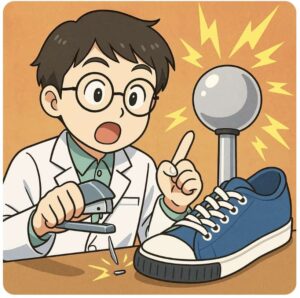One Safety Pin to Stop Static!? The Shocking Life Hack That Ends the Zap!
I’m Ken Kuwako, your Science Trainer. Every day is an experiment!
Have you ever reached for a doorknob during the dry winter season and heard a sharp “ZAP!” that made you jump? That painful sting is an unpleasant rite of passage for many in the colder months. Well, a surprising solution to this common problem has been making the rounds online: “You can prevent static electricity just by attaching a safety pin to the cuff of your sweater.”
“Wait, that’s it?” It sounds completely unbelievable, right? But a certain scientific phenomenon popped into my head, igniting a spark of curiosity: “Maybe… just maybe!” There was only one thing left to do: put it to the test! Today, we’re using the power of science to thoroughly investigate whether this everyday rumor is true.
Does a Safety Pin Stop Static? Time for the Experiment!
To verify this popular claim, we prepared our secret weapons: the “Static Charge Gun” and the “Insulated Charging Chair.” We’ll use these to numerically measure how much static electricity accumulates on the body.

First, let’s establish the baseline data. I sat in the charging chair without any pins and used the charge gun to build up static electricity in my body.
The result? An incredible voltage reading of over 20,000V (Volts)! Considering a standard wall outlet is only 100V, that’s an enormous voltage. Don’t worry, the current is too tiny to be lethal, but it’s certainly enough energy to deliver that painful “ZAP!” (Since the experiment was conducted in October, the effect of humidity caused the charge to dissipate naturally in about 8 seconds.)
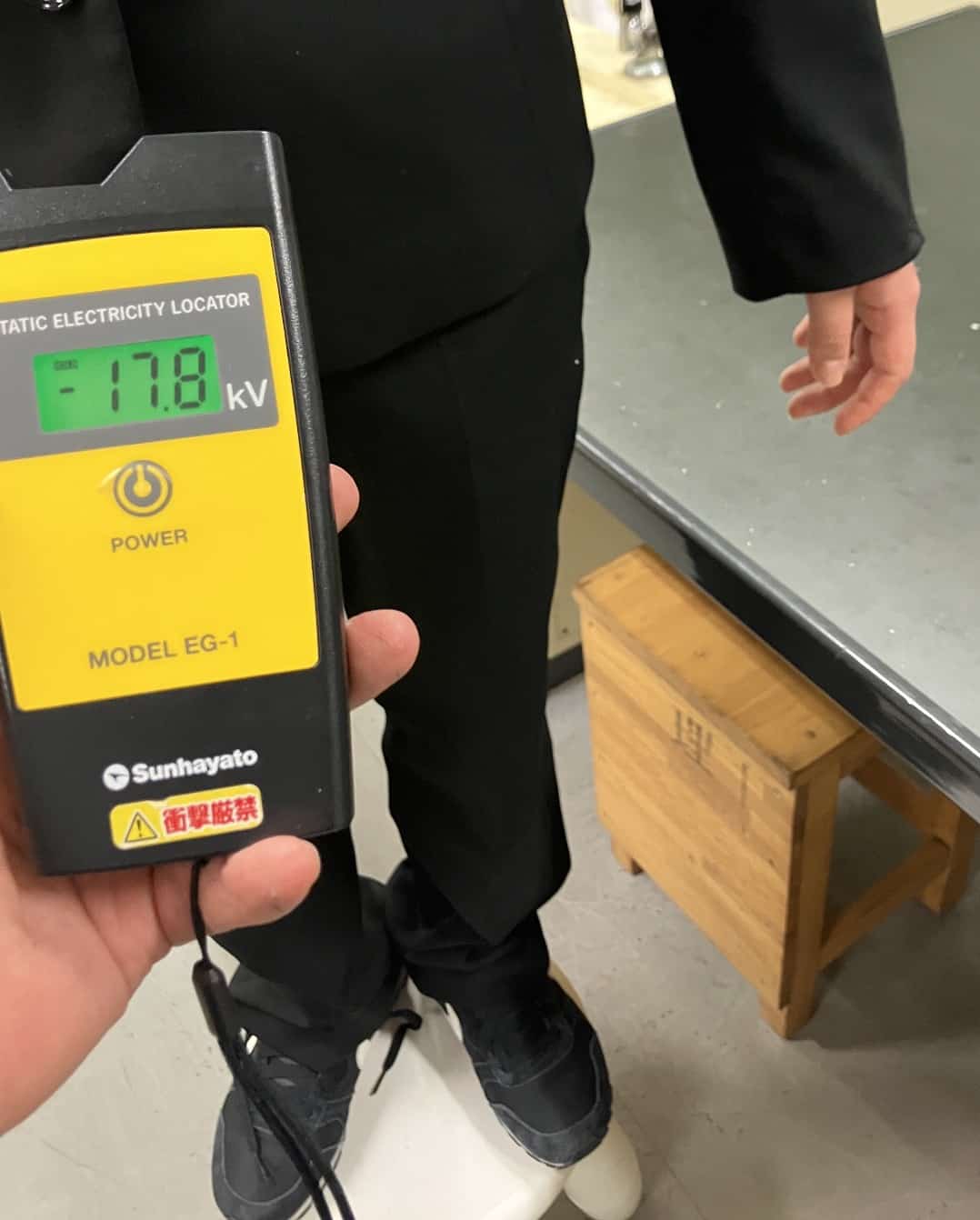
Next, while still charged, I lightly touched the cuff of my clothes to the desk. This mimics the everyday action of casually brushing against a desk or wall. The voltage only rose to 12,000V. This proves that the static electricity built up in the body is slowly escaping (discharging) through the clothes and the desk.
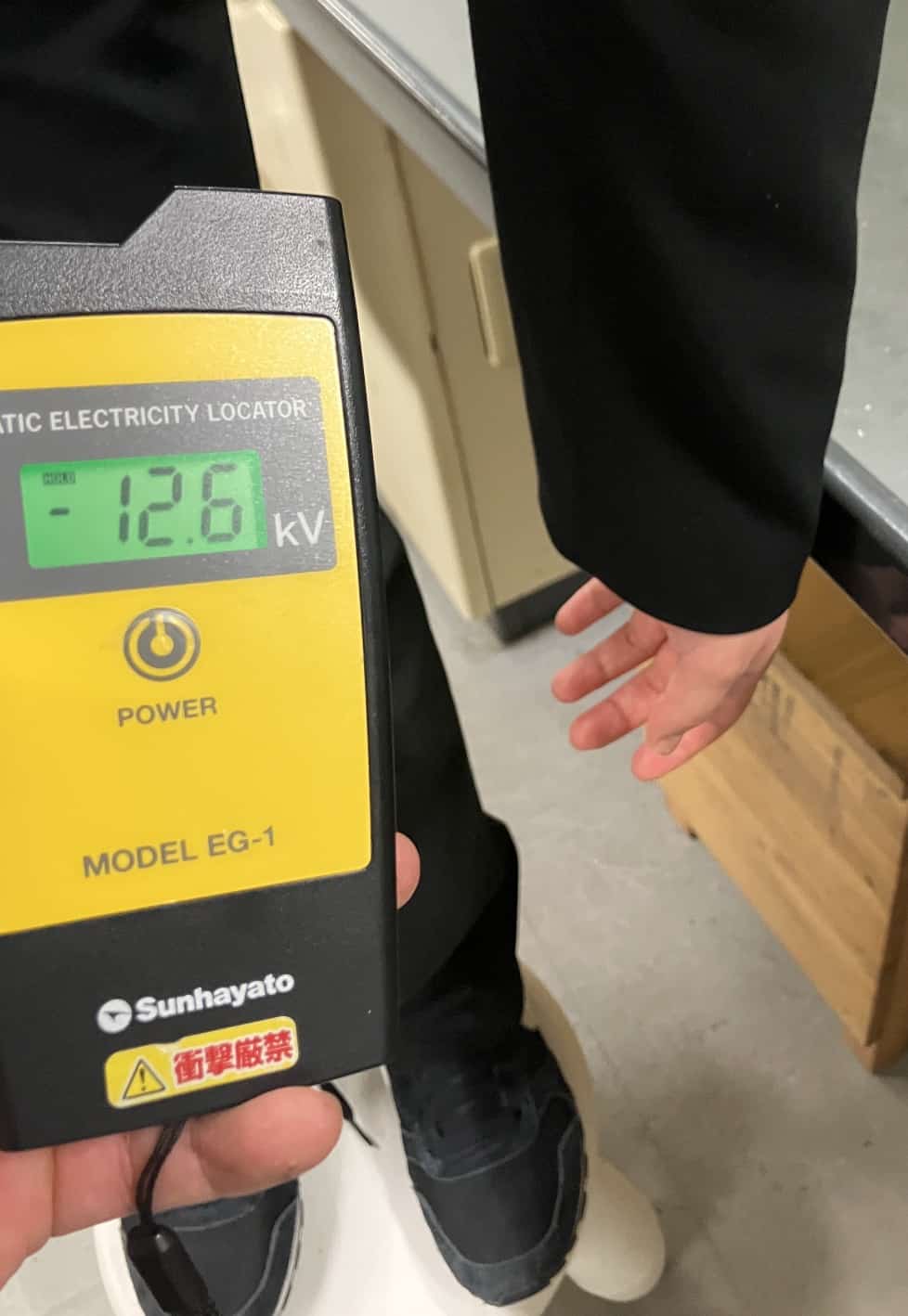
Now for the main event! I attached a metal clip (a substitute for a safety pin) to the cuff and made sure the clip touched the desk. The result was astonishing! The accumulated voltage was only a meager 9,000V!
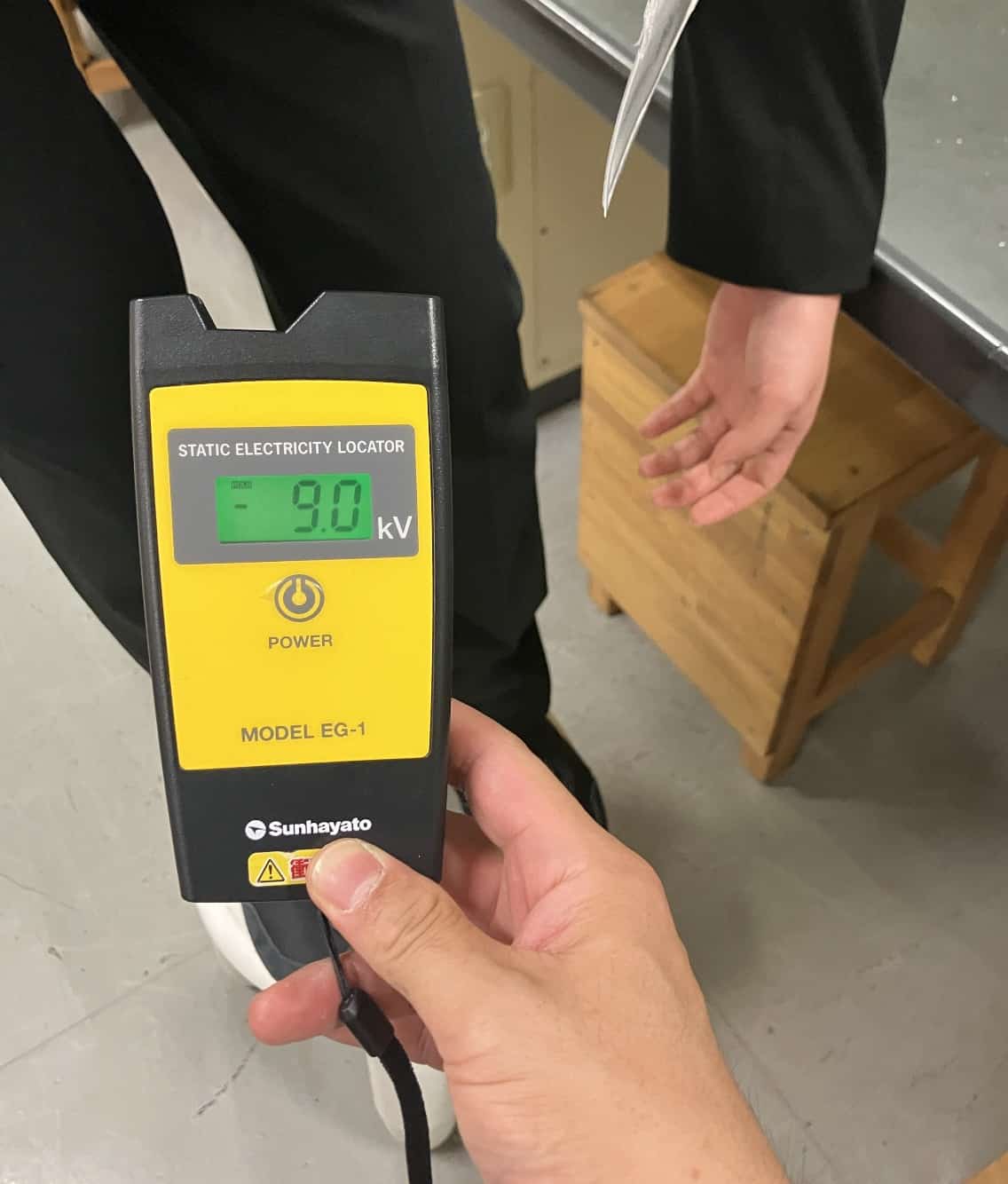
Even more interestingly, the time it took for the electricity to drain away was noticeably faster. This demonstrates that “by attaching a safety pin (metal), static electricity is both less likely to build up and, if it does, it escapes quickly.” The rumor was true!
We tried the experiment again with a larger binder clip, and the effect was even more pronounced.
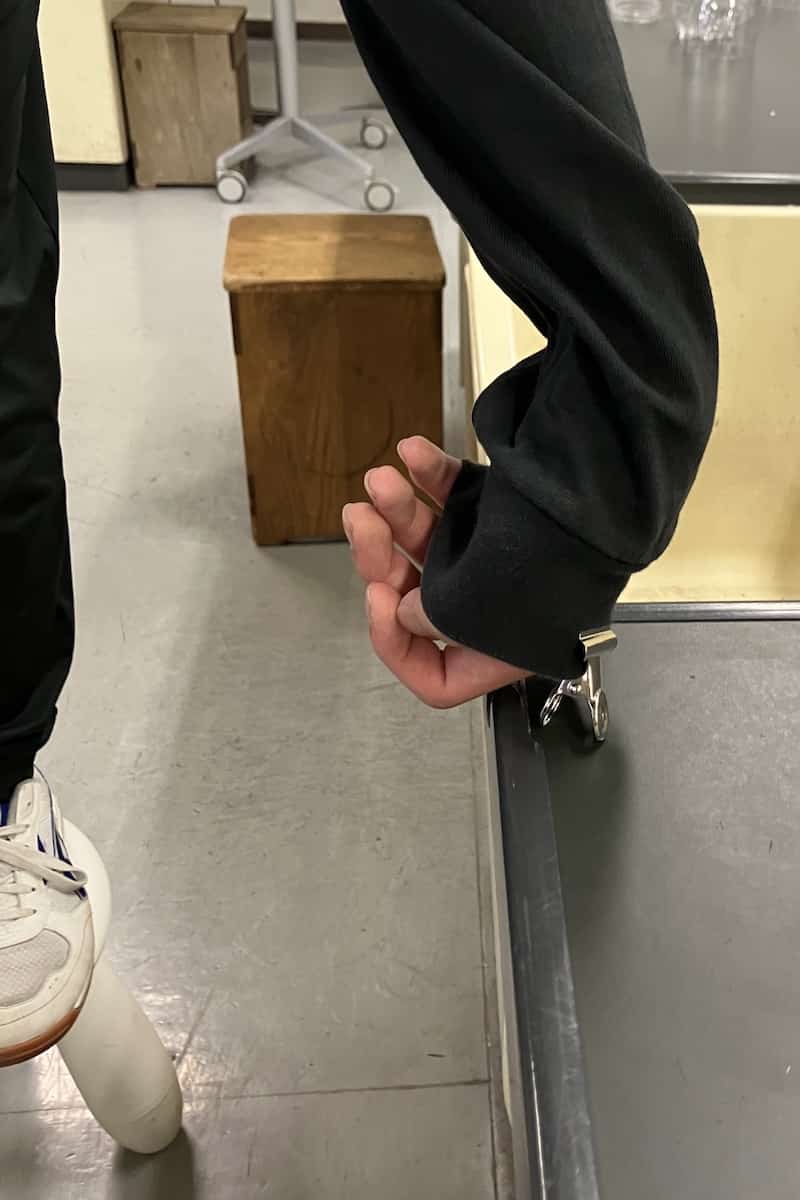
Why a Safety Pin? The Secret is “Corona Discharge”
So, how can a single safety pin have such a powerful effect? When static electricity builds up in the body, the safety pin acts as an efficient channel for the charge to discharge whenever you touch a wall or desk during your daily routine. This prevents high voltages from accumulating on your body.
A Scientific Principle Connecting Past Wisdom
There’s a reason why I suspected this rumor might be true. I had previously conducted an experiment where I drove a staple into the sole of a shoe to see if it would allow the accumulated charge to escape to the ground. It worked! This operates on the exact same principle: the metal staple acts as an electrical ground (an “earth”).
Going back even further, you often used to see cars with a “grounding strap”—a rubber belt hanging down to the road. This was designed to bleed off the static electricity that builds up on the car body while driving, serving the exact same function as our modern safety pin trick.
From one tiny safety pin to lightning rods and the ingenuity of old car accessories, the principles of science transcend time and place, actively working in countless aspects of our daily lives. If you are troubled by that dreaded “ZAP!,” why not try putting a single safety pin on your sweater cuff? You have nothing to lose!
Contact and Requests
Bring the wonder and excitement of science closer to you! We provide easy-to-understand explanations of fun science experiments you can do at home, along with tips and tricks. Feel free to browse through our content! ・The content from Science Notebook is now available as a book. Details are here ・Find out more about the operator, Ken Kuwako, here ・For all requests (writing, lectures, science classes, TV supervision/appearances, etc.), click here ・Updates on new articles are posted on X!
![]() We stream experiment videos on the Science Topics Channel!
We stream experiment videos on the Science Topics Channel!


